formerly: Rubber Factory
full archive here
full archive here
humilis
Kaur Alia Ahmed | Zalika Azim | Francesse Dolbrice | Azadeh Elmizadeh | Adriana Furlong | Kristian Kragelund | Hings Lim | Christopher Lin | Jordan Loeppky-Kolesnik | Naomi Nakazato | Rowan Renee | Pauline Rossignol | Hông-Ân Trúóng
July 12 – August 24, 2024




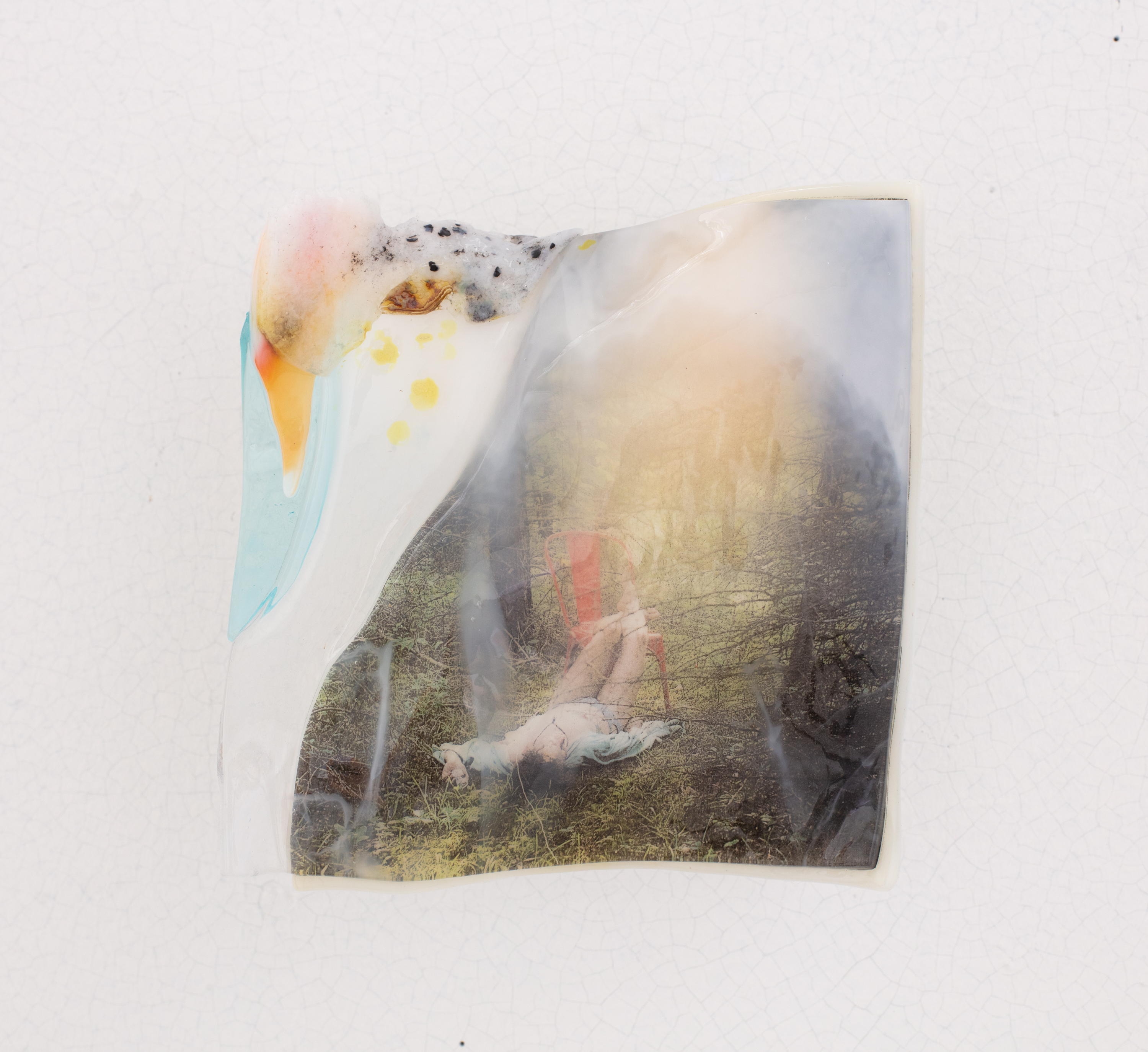
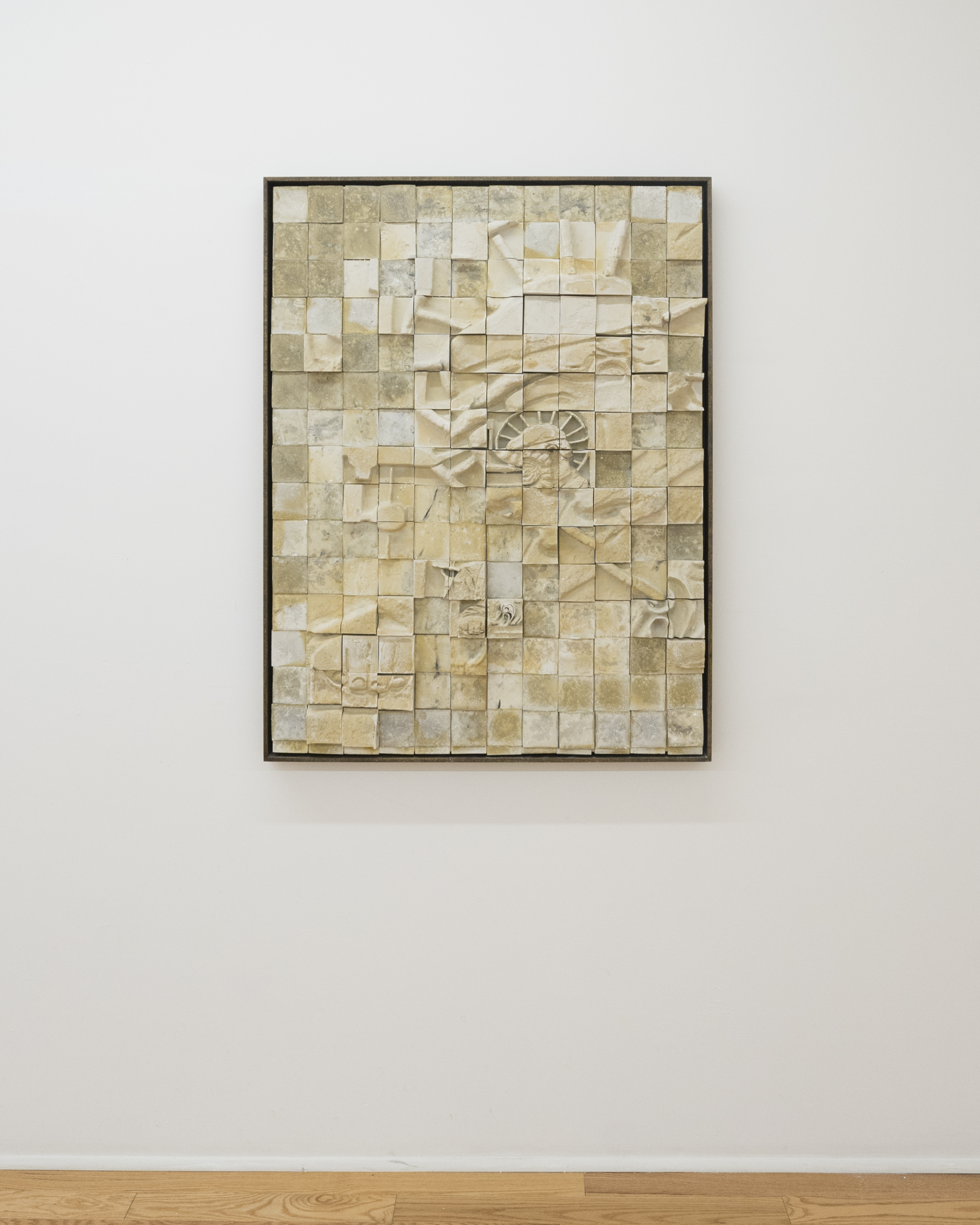

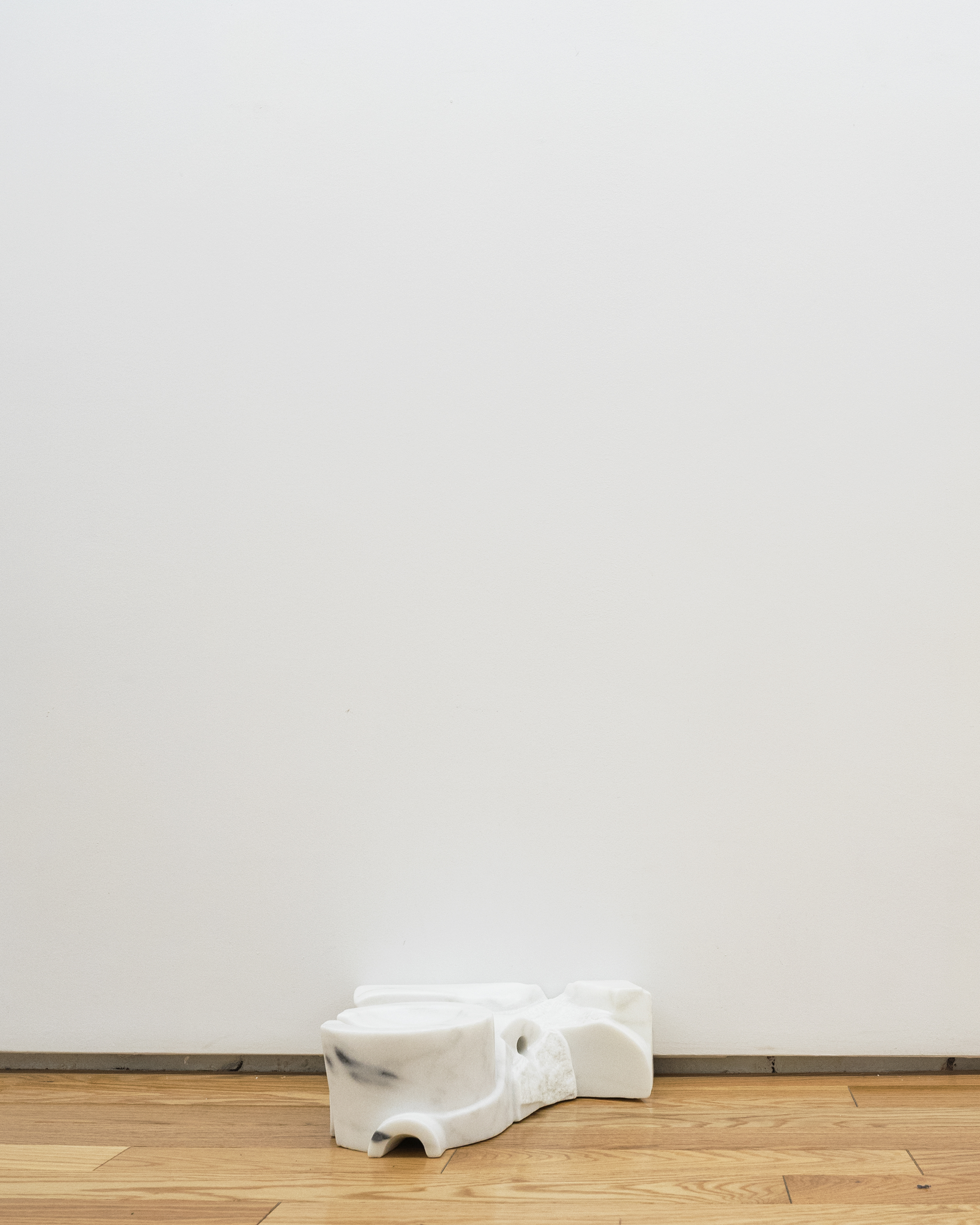
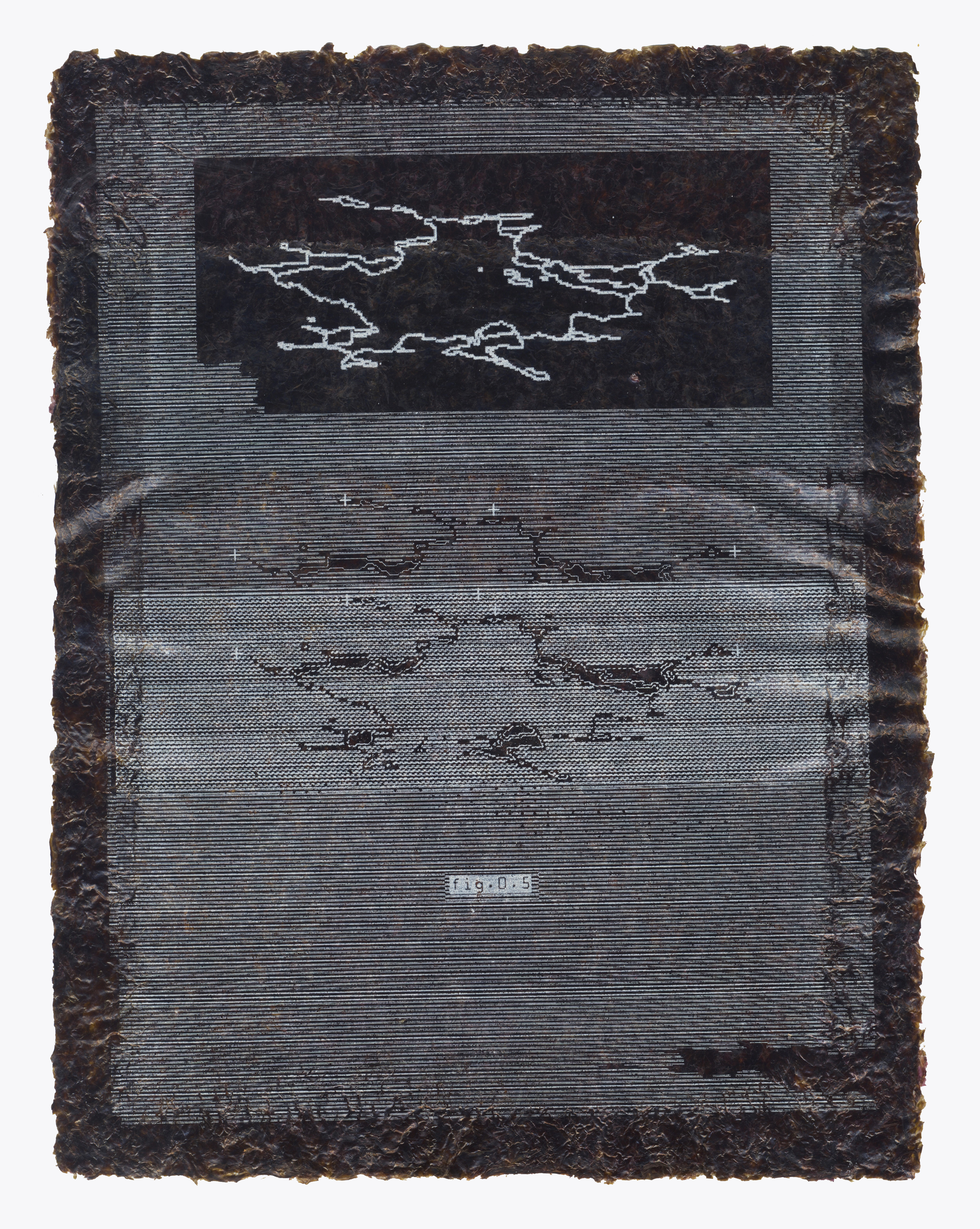
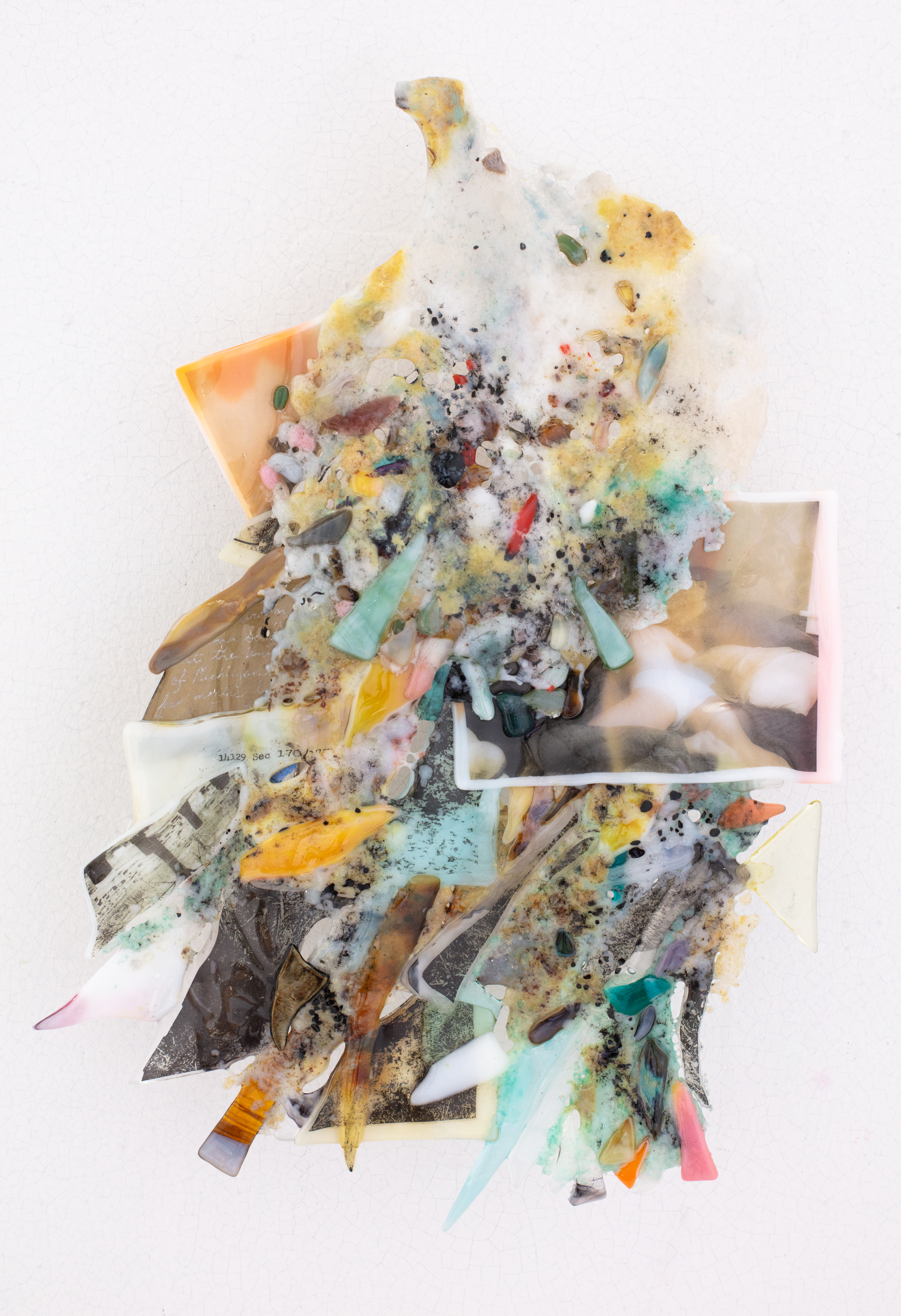






for more information and a full list of works, kindly reach us at: hello@island83.gallery
island gallery is pleased to present humilis, a group exhibition tracing the mutability of language and its grounding in the natural world. The work delves into the intricacies of personal and collective memory-keeping, exploring how these memories can be processed alchemically. Misremembrance intertwines with migratory experiences, presenting ecological facts and fictions, while uncovering power structures deeply rooted in language.
The word humilis is a Latin adjective derived from the noun humus, meaning "ground, dirt, earth." Here, language performs as an arbiter of value, embedding connotations of what is low, undesirable, and insignificant. Ancestral histories are dotted with blank spaces, raising questions of nativity: What does it mean to truly belong? How do we delineate a space for ourselves?
Zalika Azim uses text and installation to process histories of Black migration, bridging improvised language and oral tradition to examine how land functions as an archive for cultural memory. This exploration of memory and the land is also found in the work of Naomi Nakazato, who develops a physical type of mercurial boundary-making by printing on natural fibers of seaweed. Each gesture marks a body in motion, restlessly searching for a place to settle and dwell, reflecting the transient nature of belonging.
Rowan Renee connects queer embodiment with the hostile arctic landscape. The fragility of the human body prompts consideration of self-collapse and our interdependency with the natural world, recalling Julia Kristeva’s Theory of Abjection. Their process results in hybrid forms that contemplate the future of threatened communities and ecosystems. This desire to create solidarity is emphasized in Hong-An Truong's multimedia installation. Truong uses liner notes from a 1973 activist folk album to bring a past revolutionary idealism to the present, evoking a spirit of radical protest through the cooperation of sound and tapestry.
The theme of personal memory is explored by Pauline Rossignol, who uses photographs from her family album to stitch together an ancestral history. Her work traces lineage through images of her family’s diaspora. Kristian Kragelund’s investigation of ownership and colonial narratives complicates the linear structure of the archive. Kragelund's imagery references botanical etchings made in 1772 of flora imported to the British Empire from colonized lands, interrogating formerly accepted false truths. Kaur Alia Ahmed investigates the alchemical process with a group of glass sculptures. There is transitory nature in the way the material overlaps, wraps, collapses on itself, marks made through rhythmic movement. Light passes through the glass, distorted by the bulbous exteriors.
An act of collecting and memorializing is highlighted in Christopher Lin’s work, where molten cicada shells are arranged into a preserved structure evoking hierarchy as well as the cyclical nature of memory. This gesture of memory preservation extends to Hings Lim’s wall-suspended sculpture, composed of collected biomaterial from hair salons. Lim traces the collective memory of a neighborhood, paying homage to its diverse occupants.
Azadeh Elmizadeh processes her connection to her home country through paintings that reference Middle Eastern mythology, creating transcultural and temporal connections with translucent washes of paint. This exploration of boundaries and connections is mirrored in Jordan Loeppky-Kolesnik’s sculptures, which reference hydrological infrastructure. Loeppky-Kolesnik examines forms that divide, block, designate, and impose across large-scale networks of water.
Adriana Furlong engages in a practice of excavation, carving out and revealing the interiors of solid spaces with modular forms, granting access to previously inaccessible places. This hidden view of memory and space resonates with Francesse Dolbrice’s development of a taxonomy of signs and symbols. The signs appear in both their drawings and sculptures, containing specific translations in their forms and articulating a personal language known only to the artist.
Kaur Alia Ahmed (b. 1994 Toronto, Canada) is an artist and writer living in Brooklyn. They make glass, video, poems, jewelry, plays and tattoos, and is a graduate of the MFA program at Bard College. Their first book, Cursive Paradise, is forthcoming from Wendy’s Subway in 2024. Their work has been included in group presentations at LTK Enterprises in Marfa, Texas, Alyssa Davis Gallery in New York, NY and Interstate Gallery in Brooklyn, NY. Their solo debut, ‘sky, harp’ was presented at Entrance in NYC.
Zalika Azim (b. 1990, Brooklyn, NY) is an interdisciplinary artist and educator with ancestral roots in Aiken, South Carolina and Port of Spain, Trinidad and Tobago. Her conceptual practice explores the tensions between personal and collective narratives (both known and indecipherable) in order to explore Black belonging, migration, movement, and possibility. Azim has presented solo exhibitions at Baxter Street at The Camera Club of New York (New York, NY) and Soho20 Gallery (New York, NY). Her work has been included in national group exhibitions, including MASS Gallery (Austin, TX), Various Small Fires (Los Angeles, CA), The Mistake Room (Los Angeles, CA), San Luis Obispo Museum of Art (San Luis Obispo, CA), Milwaukee Art Museum (Milwaukee, WI), Gagosian (New York, NY), Welancora Gallery (Brooklyn, NY), Maryland Institute College of Art (Baltimore, MA), The African American Museum in Philadelphia (Philadelphia, PA), Dorsky Gallery (New York, NY), and The Dean Collection. Azim received a BFA in Photography & Imaging from New York University (2014), a BA in Social and Cultural Analysis from New York University (2014), and a MFA in Photography from the University of California Los Angeles (2023).
Francesse Dolbrice is a Haitian Sculptor who focuses on anthropologically constructing the ecosystem of their brain. Developing an encyclopedic manual of this ecosystem is tied to the linguistic method of mythopoeia. As a cartographer maps out an atlas, the artist maps out the neurodivergence and subtle ingestions that their brain experiences during different emotional moments, and cognition. Making sure to note both the similarities and the differences of the “terrain”, the “bodies of water”, the “atmosphere”, and the “ecosystem” of every region.
Azadeh Elmizadeh is an Iranian-Canadian visual artist based in Toronto. She holds an MFA from the University of Guelph and a BFA from OCAD University and Tehran University. Since 2020, Elmizadeh has presented solo and two-person exhibitions at Sea View (Los Angeles), Tube Culture Hall (Milan), the Southern Alberta Art Gallery (Lethbridge), and Franz Kaka (Toronto). Her work has been exhibited internationally at Europa and Harkawik (New York), Public Gallery (London), Anat Ebgi (Los Angeles), and in Canada at Blackwood Gallery (Mississauga) and Kamloops Art Gallery. She was the 2020 recipient of the Joseph Plaskett Award in painting.
Adriana Furlong is an artist based in New York. Her work uses symbols that allegorize and translate labor into urban space. Through computational modeling, 3D printing, and painting, her work reflects the contemporary experiences of labor, exhaustion, and desire. Reviews of her work have appeared in “The Brooklyn Rail,” “The Coastal Post,” “Musée Magazine,” and “Teeth Magazine.” “Hundreds Do Things,” her debut solo show, exhibited at Island in 2023. Furlong received her BFA from the Parsons School of Design in 2022 and participated in the 2023–2024 Interdisciplinary Art and Theory Program in New York.
Kristian Kragelund (b. 1987) is a multidisciplinary artist whose practice is concerned with how value and power asserts itself within the structural formations of everyday life. With a research-driven approach to infrastructure and the built environment, he seeks to reveal the often hidden sites where violence and systemic control is enacted by the dynamics of production and consumption. Through a critical examination of commercial and industrial debris as ambivalent artefacts of the 21st century, he proposes a re-evaluation of the historical and material inertia of the object, and suggests its speculative potential as markers of the contemporary human condition. He received his BA (Honours) in Fine Art from Central Saint Martins in London, UK and MFA from Columbia University in New York City, USA. He has exhibited widely internationally and his work is held in several private and public collections including The Danish Arts Foundation and as a permanent public commission in Whitechapel, London.
Hings Lim was born in 1989 in Kuala Lumpur, Malaysia, and is currently based in Los Angeles, California. He works in an expanded range of the medium that includes video, installation, sculpture, performance, simulation, and situation. His process-oriented practice probes the formation of apparatuses and addresses the multiplicities between historicity, performativity, materiality, subjectivity of things and their becoming. Selected group exhibitions include ‘Don’t Look Now’, Human Resources, Los Angeles; ‘Wonderland’, EPOCH Gallery, Los Angeles; ‘GLAMFA 2020: Double Play’, CSU Long Beach Art Galleries, Long Beach, California; ‘Young Contemporaries Award’, National Art Gallery, Kuala Lumpur; ‘Art Stage Singapore’, Singapore; and ‘Malaysian Art: A New Perspective’, Richard Koh Fine Art, Kuala Lumpur. He was one of the founders of Lattalilat, a community art project, and exhibited at National Art Gallery, Kuala Lumpur; MIA College Gallery, Kuala Lumpur; FACA Gallery, Sarawak; and Muzium & Galeri Tengku Fauziah, Penang, Malaysia. He received his Master of Fine Arts degree and the Performance Studies Graduate Certificate at the University of Southern California, Los Angeles in 2021, as a recipient of the USC International Artist Fellowship; and a Bachelor of Fine Arts degree from the Universiti Malaysia Sarawak, Malaysia in 2012.
Christopher Lin is a Brooklyn-based artist and educator with a background in research science. Fueled by a lifelong obsession with fossils, his experimental installations, sculptures, and performances question the world we inhabit and envision the one we will leave behind. Often collaborating with non-human organisms and wider ecologies, his time-based works synthesize elements of environmental ecology with Zen poetics to explore the interconnected nature of our material world. After receiving a BA from Yale University and an MFA from Hunter College, Lin received the C12 Emerging Artist Award in 2016. He has shown work and performed throughout New York City, including at: SVA Curatorial Practice, ABC No Rio, Recess Art, Flux Factory, Wave Hill, the United Nations Headquarters, the Bronx Museum, and the Queens Museum. He was a 2020 Bronx Museum AIM Emerging Artist Fellow, a 2022 Wave Hill Winter Workspace Artist-in-Residence, and a 2023 Swale Lab + Urban Soils Resident Artist. He currently teaches at Hunter College and Parsons, The New School and is co-director of the research-based artist collective, Sprechgesang Institute.
Jordan Loeppky-Kolesnik is an artist from Montreal based in Los Angeles. They work in sculpture, installation, public art, and video, creating experiences that tell stories about ecological survival, speculative fiction, the queer body, personal relationships, and sense of place. Recent exhibitions of their work have taken place at SculptureCenter (New York), Art Lot (Brooklyn), The Canary Test (Los Angeles), MOUNTAINS (Berlin), Honor Fraser Gallery (Los Angeles), SOPHIE TAPPEINER (Vienna), Lantz'scher Skulpturenpark (Dusseldorf), Skol arts actuels (Montreal), Bass & Reiner (San Francisco), and the ONE Archives (Los Angeles). They hold an MFA in Sculpture + Extended Media from Virginia Commonwealth University (Richmond, USA), and a BFA in Intermedia from Concordia University (Montreal). Their work has been supported by the Dedalus Foundation, Canada Council for the Arts, the Foundation for Contemporary Arts, the Center for Cultural Innovation, les Fonds de recherche du Québec–Société et culture, and the Hnatyshyn Foundation. In 2024 they will open a new land art project in the Hudson Valley commissioned by the Black Cube Museum.
Naomi Nakazato is a Japanese-American, multidisciplinary artist whose predominately materials-based practice surveys the conglomerate landscape of memory, language, and the artificial authenticity of the biracial experience. Her work utilizes semiotics and syntactic intervention of natural objects to examine the weight of authenticity and articulate belonging. Nakazato holds a BA in Painting and Drawing from the South Carolina School of the Arts and an MFA in Painting from the New York Academy of Art. Her recent work and installations have been exhibited at Olympia (NY), Below Grand (NY), NARS Foundation (Brooklyn, NY), Galerie Tracanelli (Grenoble, FR), and PADA (Barreiro, PT). She is the recipient of grants from the Foundation for Contemporary Arts, FST Studio Projects Funds, and the Elizabeth Greenshields Foundation. Nakazato lives and works in Brooklyn, NY.
Rowan Renee (b. 1985, West Palm Beach, Florida) is a genderqueer artist currently working in Brooklyn, NY. Their research-based practice addresses intergenerational trauma, gender-based violence and the impact of the criminal legal system through image, text and installation. Their work has been featured in solo exhibitions at Smack Mellon (2021), Five Myles (2021), The Anchorage Museum (2021), Aperture Foundation (2017), and Pioneer Works (2015). In 2023, The Perimeter Path, their largest installation to date, opened at the Historic Chapel in Green-Wood Cemetery, where they have been an Artist-in-Residence for the past year. In 2020, their installation No Spirit For Me was included in the critically acclaimed exhibition Marking Time: Art in the Age of Mass Incarceration, curated by Dr. Nicole R. Fleetwood at MoMA PS1.
Pauline Rossignol is a transdisciplinary artist born in the US and raised in Paris, France. She received her Bachelor’s of Fine Arts from Wimbledon College of Arts, University of the Arts London (UAL) and her Master’s of Fine Arts from Parsons School of Design in New York. She is the production and communication manager of the Domus Artist Residency since its opening in 2019. Her work is based on her understanding of the information that defines one individual through the lens of memory, history, and archiving, while taking into account the environment and context of the field of exploration. Her work celebrates the richness of family narratives and stories, by playing with the politics of memory, and the idea of truth or fact, represented through objects and narrations.
Hông-Ân Trúóng uses photography, video, and sound to explore immigrant, refugee, and decolonial narratives and subjectivities. Her work has been shown in group exhibitions at the ICP(NY), the Nasher Museum of Art (Durham, NC), The Kitchen (NY), Nhà Sàn (Hanoi), the Irish Museum of Modern Art (Dublin), the Phillips Collection (Washington D.C), and the Museum of Modern Art (NY). Her work was included in the New Orleans triennial Prospect.4 in 2018. She was a Guggenheim Fellow in 2019-2020, the Capp St. Artist in Residence at the Wattis Institute for Contemporary Art in 2020, and a MacDowell Residency Fellow in 2022. Her writing has appeared in the Brooklyn Rail, Shifter Magazine, and most recently in Best! Letters from Asian Americans in the Arts, published by Paper Monument in 2021, and in American Art in Asia: Artistic Practice and Theoretical Divergence, edited by Michelle Lim and Kyunghee Pyun, published by Routledge in 2022. She recently launched two web-based projects during the pandemic, Return to the Source, with denisse and rade, and We Listen Nearby, as part of her Wattis residency. Hông-Ân lives in Durham, North Carolina where she is an activist and a teacher. She is a professor at the University of North Carolina at Chapel Hill.
The word humilis is a Latin adjective derived from the noun humus, meaning "ground, dirt, earth." Here, language performs as an arbiter of value, embedding connotations of what is low, undesirable, and insignificant. Ancestral histories are dotted with blank spaces, raising questions of nativity: What does it mean to truly belong? How do we delineate a space for ourselves?
Zalika Azim uses text and installation to process histories of Black migration, bridging improvised language and oral tradition to examine how land functions as an archive for cultural memory. This exploration of memory and the land is also found in the work of Naomi Nakazato, who develops a physical type of mercurial boundary-making by printing on natural fibers of seaweed. Each gesture marks a body in motion, restlessly searching for a place to settle and dwell, reflecting the transient nature of belonging.
Rowan Renee connects queer embodiment with the hostile arctic landscape. The fragility of the human body prompts consideration of self-collapse and our interdependency with the natural world, recalling Julia Kristeva’s Theory of Abjection. Their process results in hybrid forms that contemplate the future of threatened communities and ecosystems. This desire to create solidarity is emphasized in Hong-An Truong's multimedia installation. Truong uses liner notes from a 1973 activist folk album to bring a past revolutionary idealism to the present, evoking a spirit of radical protest through the cooperation of sound and tapestry.
The theme of personal memory is explored by Pauline Rossignol, who uses photographs from her family album to stitch together an ancestral history. Her work traces lineage through images of her family’s diaspora. Kristian Kragelund’s investigation of ownership and colonial narratives complicates the linear structure of the archive. Kragelund's imagery references botanical etchings made in 1772 of flora imported to the British Empire from colonized lands, interrogating formerly accepted false truths. Kaur Alia Ahmed investigates the alchemical process with a group of glass sculptures. There is transitory nature in the way the material overlaps, wraps, collapses on itself, marks made through rhythmic movement. Light passes through the glass, distorted by the bulbous exteriors.
An act of collecting and memorializing is highlighted in Christopher Lin’s work, where molten cicada shells are arranged into a preserved structure evoking hierarchy as well as the cyclical nature of memory. This gesture of memory preservation extends to Hings Lim’s wall-suspended sculpture, composed of collected biomaterial from hair salons. Lim traces the collective memory of a neighborhood, paying homage to its diverse occupants.
Azadeh Elmizadeh processes her connection to her home country through paintings that reference Middle Eastern mythology, creating transcultural and temporal connections with translucent washes of paint. This exploration of boundaries and connections is mirrored in Jordan Loeppky-Kolesnik’s sculptures, which reference hydrological infrastructure. Loeppky-Kolesnik examines forms that divide, block, designate, and impose across large-scale networks of water.
Adriana Furlong engages in a practice of excavation, carving out and revealing the interiors of solid spaces with modular forms, granting access to previously inaccessible places. This hidden view of memory and space resonates with Francesse Dolbrice’s development of a taxonomy of signs and symbols. The signs appear in both their drawings and sculptures, containing specific translations in their forms and articulating a personal language known only to the artist.
Zalika Azim (b. 1990, Brooklyn, NY) is an interdisciplinary artist and educator with ancestral roots in Aiken, South Carolina and Port of Spain, Trinidad and Tobago. Her conceptual practice explores the tensions between personal and collective narratives (both known and indecipherable) in order to explore Black belonging, migration, movement, and possibility. Azim has presented solo exhibitions at Baxter Street at The Camera Club of New York (New York, NY) and Soho20 Gallery (New York, NY). Her work has been included in national group exhibitions, including MASS Gallery (Austin, TX), Various Small Fires (Los Angeles, CA), The Mistake Room (Los Angeles, CA), San Luis Obispo Museum of Art (San Luis Obispo, CA), Milwaukee Art Museum (Milwaukee, WI), Gagosian (New York, NY), Welancora Gallery (Brooklyn, NY), Maryland Institute College of Art (Baltimore, MA), The African American Museum in Philadelphia (Philadelphia, PA), Dorsky Gallery (New York, NY), and The Dean Collection. Azim received a BFA in Photography & Imaging from New York University (2014), a BA in Social and Cultural Analysis from New York University (2014), and a MFA in Photography from the University of California Los Angeles (2023).
Francesse Dolbrice is a Haitian Sculptor who focuses on anthropologically constructing the ecosystem of their brain. Developing an encyclopedic manual of this ecosystem is tied to the linguistic method of mythopoeia. As a cartographer maps out an atlas, the artist maps out the neurodivergence and subtle ingestions that their brain experiences during different emotional moments, and cognition. Making sure to note both the similarities and the differences of the “terrain”, the “bodies of water”, the “atmosphere”, and the “ecosystem” of every region.
Azadeh Elmizadeh is an Iranian-Canadian visual artist based in Toronto. She holds an MFA from the University of Guelph and a BFA from OCAD University and Tehran University. Since 2020, Elmizadeh has presented solo and two-person exhibitions at Sea View (Los Angeles), Tube Culture Hall (Milan), the Southern Alberta Art Gallery (Lethbridge), and Franz Kaka (Toronto). Her work has been exhibited internationally at Europa and Harkawik (New York), Public Gallery (London), Anat Ebgi (Los Angeles), and in Canada at Blackwood Gallery (Mississauga) and Kamloops Art Gallery. She was the 2020 recipient of the Joseph Plaskett Award in painting.
Adriana Furlong is an artist based in New York. Her work uses symbols that allegorize and translate labor into urban space. Through computational modeling, 3D printing, and painting, her work reflects the contemporary experiences of labor, exhaustion, and desire. Reviews of her work have appeared in “The Brooklyn Rail,” “The Coastal Post,” “Musée Magazine,” and “Teeth Magazine.” “Hundreds Do Things,” her debut solo show, exhibited at Island in 2023. Furlong received her BFA from the Parsons School of Design in 2022 and participated in the 2023–2024 Interdisciplinary Art and Theory Program in New York.
Kristian Kragelund (b. 1987) is a multidisciplinary artist whose practice is concerned with how value and power asserts itself within the structural formations of everyday life. With a research-driven approach to infrastructure and the built environment, he seeks to reveal the often hidden sites where violence and systemic control is enacted by the dynamics of production and consumption. Through a critical examination of commercial and industrial debris as ambivalent artefacts of the 21st century, he proposes a re-evaluation of the historical and material inertia of the object, and suggests its speculative potential as markers of the contemporary human condition. He received his BA (Honours) in Fine Art from Central Saint Martins in London, UK and MFA from Columbia University in New York City, USA. He has exhibited widely internationally and his work is held in several private and public collections including The Danish Arts Foundation and as a permanent public commission in Whitechapel, London.
Hings Lim was born in 1989 in Kuala Lumpur, Malaysia, and is currently based in Los Angeles, California. He works in an expanded range of the medium that includes video, installation, sculpture, performance, simulation, and situation. His process-oriented practice probes the formation of apparatuses and addresses the multiplicities between historicity, performativity, materiality, subjectivity of things and their becoming. Selected group exhibitions include ‘Don’t Look Now’, Human Resources, Los Angeles; ‘Wonderland’, EPOCH Gallery, Los Angeles; ‘GLAMFA 2020: Double Play’, CSU Long Beach Art Galleries, Long Beach, California; ‘Young Contemporaries Award’, National Art Gallery, Kuala Lumpur; ‘Art Stage Singapore’, Singapore; and ‘Malaysian Art: A New Perspective’, Richard Koh Fine Art, Kuala Lumpur. He was one of the founders of Lattalilat, a community art project, and exhibited at National Art Gallery, Kuala Lumpur; MIA College Gallery, Kuala Lumpur; FACA Gallery, Sarawak; and Muzium & Galeri Tengku Fauziah, Penang, Malaysia. He received his Master of Fine Arts degree and the Performance Studies Graduate Certificate at the University of Southern California, Los Angeles in 2021, as a recipient of the USC International Artist Fellowship; and a Bachelor of Fine Arts degree from the Universiti Malaysia Sarawak, Malaysia in 2012.
Christopher Lin is a Brooklyn-based artist and educator with a background in research science. Fueled by a lifelong obsession with fossils, his experimental installations, sculptures, and performances question the world we inhabit and envision the one we will leave behind. Often collaborating with non-human organisms and wider ecologies, his time-based works synthesize elements of environmental ecology with Zen poetics to explore the interconnected nature of our material world. After receiving a BA from Yale University and an MFA from Hunter College, Lin received the C12 Emerging Artist Award in 2016. He has shown work and performed throughout New York City, including at: SVA Curatorial Practice, ABC No Rio, Recess Art, Flux Factory, Wave Hill, the United Nations Headquarters, the Bronx Museum, and the Queens Museum. He was a 2020 Bronx Museum AIM Emerging Artist Fellow, a 2022 Wave Hill Winter Workspace Artist-in-Residence, and a 2023 Swale Lab + Urban Soils Resident Artist. He currently teaches at Hunter College and Parsons, The New School and is co-director of the research-based artist collective, Sprechgesang Institute.
Jordan Loeppky-Kolesnik is an artist from Montreal based in Los Angeles. They work in sculpture, installation, public art, and video, creating experiences that tell stories about ecological survival, speculative fiction, the queer body, personal relationships, and sense of place. Recent exhibitions of their work have taken place at SculptureCenter (New York), Art Lot (Brooklyn), The Canary Test (Los Angeles), MOUNTAINS (Berlin), Honor Fraser Gallery (Los Angeles), SOPHIE TAPPEINER (Vienna), Lantz'scher Skulpturenpark (Dusseldorf), Skol arts actuels (Montreal), Bass & Reiner (San Francisco), and the ONE Archives (Los Angeles). They hold an MFA in Sculpture + Extended Media from Virginia Commonwealth University (Richmond, USA), and a BFA in Intermedia from Concordia University (Montreal). Their work has been supported by the Dedalus Foundation, Canada Council for the Arts, the Foundation for Contemporary Arts, the Center for Cultural Innovation, les Fonds de recherche du Québec–Société et culture, and the Hnatyshyn Foundation. In 2024 they will open a new land art project in the Hudson Valley commissioned by the Black Cube Museum.
Naomi Nakazato is a Japanese-American, multidisciplinary artist whose predominately materials-based practice surveys the conglomerate landscape of memory, language, and the artificial authenticity of the biracial experience. Her work utilizes semiotics and syntactic intervention of natural objects to examine the weight of authenticity and articulate belonging. Nakazato holds a BA in Painting and Drawing from the South Carolina School of the Arts and an MFA in Painting from the New York Academy of Art. Her recent work and installations have been exhibited at Olympia (NY), Below Grand (NY), NARS Foundation (Brooklyn, NY), Galerie Tracanelli (Grenoble, FR), and PADA (Barreiro, PT). She is the recipient of grants from the Foundation for Contemporary Arts, FST Studio Projects Funds, and the Elizabeth Greenshields Foundation. Nakazato lives and works in Brooklyn, NY.
Rowan Renee (b. 1985, West Palm Beach, Florida) is a genderqueer artist currently working in Brooklyn, NY. Their research-based practice addresses intergenerational trauma, gender-based violence and the impact of the criminal legal system through image, text and installation. Their work has been featured in solo exhibitions at Smack Mellon (2021), Five Myles (2021), The Anchorage Museum (2021), Aperture Foundation (2017), and Pioneer Works (2015). In 2023, The Perimeter Path, their largest installation to date, opened at the Historic Chapel in Green-Wood Cemetery, where they have been an Artist-in-Residence for the past year. In 2020, their installation No Spirit For Me was included in the critically acclaimed exhibition Marking Time: Art in the Age of Mass Incarceration, curated by Dr. Nicole R. Fleetwood at MoMA PS1.
Pauline Rossignol is a transdisciplinary artist born in the US and raised in Paris, France. She received her Bachelor’s of Fine Arts from Wimbledon College of Arts, University of the Arts London (UAL) and her Master’s of Fine Arts from Parsons School of Design in New York. She is the production and communication manager of the Domus Artist Residency since its opening in 2019. Her work is based on her understanding of the information that defines one individual through the lens of memory, history, and archiving, while taking into account the environment and context of the field of exploration. Her work celebrates the richness of family narratives and stories, by playing with the politics of memory, and the idea of truth or fact, represented through objects and narrations.
Hông-Ân Trúóng uses photography, video, and sound to explore immigrant, refugee, and decolonial narratives and subjectivities. Her work has been shown in group exhibitions at the ICP(NY), the Nasher Museum of Art (Durham, NC), The Kitchen (NY), Nhà Sàn (Hanoi), the Irish Museum of Modern Art (Dublin), the Phillips Collection (Washington D.C), and the Museum of Modern Art (NY). Her work was included in the New Orleans triennial Prospect.4 in 2018. She was a Guggenheim Fellow in 2019-2020, the Capp St. Artist in Residence at the Wattis Institute for Contemporary Art in 2020, and a MacDowell Residency Fellow in 2022. Her writing has appeared in the Brooklyn Rail, Shifter Magazine, and most recently in Best! Letters from Asian Americans in the Arts, published by Paper Monument in 2021, and in American Art in Asia: Artistic Practice and Theoretical Divergence, edited by Michelle Lim and Kyunghee Pyun, published by Routledge in 2022. She recently launched two web-based projects during the pandemic, Return to the Source, with denisse and rade, and We Listen Nearby, as part of her Wattis residency. Hông-Ân lives in Durham, North Carolina where she is an activist and a teacher. She is a professor at the University of North Carolina at Chapel Hill.
